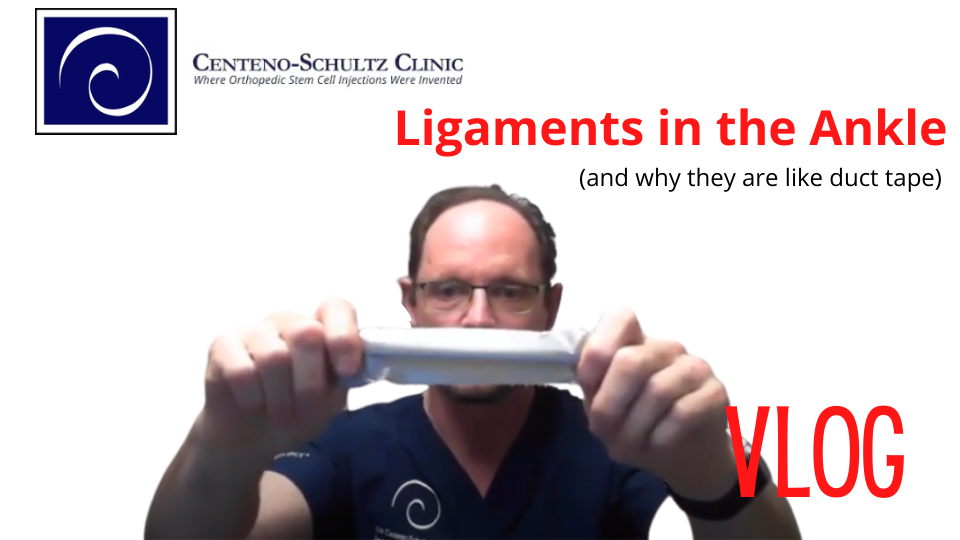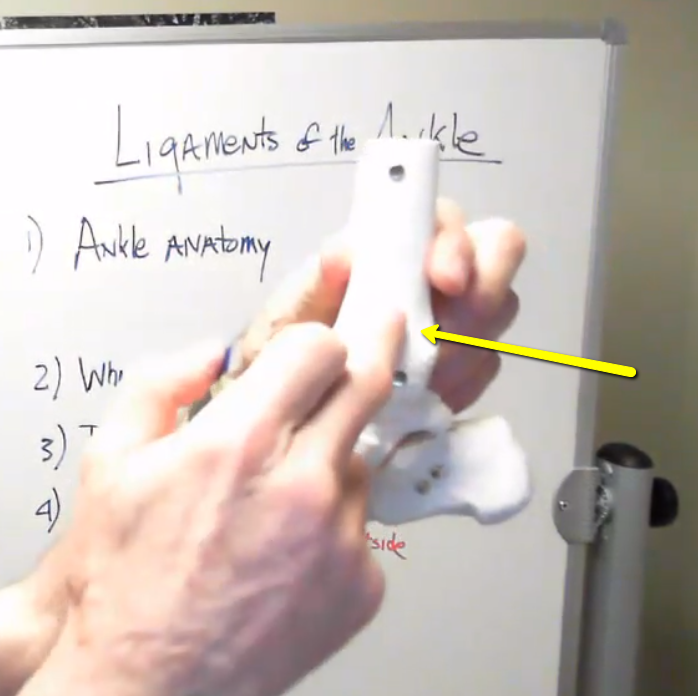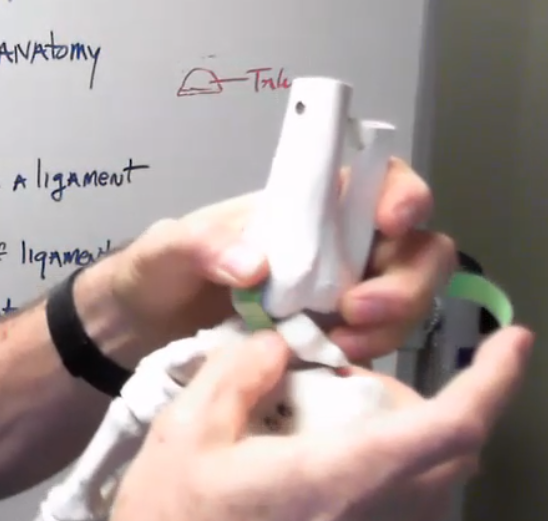Transcript
Hi everybody, this Dr. Schultz, thanks for checking in.
Today, we’re going to be reviewing the ligaments of the ankle. This is really important, and I just want to take a little bit of your time to review it today. We’re going to be reviewing, in brief:
- Ankle anatomy,
- What in the world is a ligament and why should I care?
- What is the role of a ligament?
- What are the ligaments of the ankle?
Ankle Anatomy
So, I’ve got a little tool here. This is a foot/ankle diagram or model. And while there are 26 bones and different joints, all you have to be concerned about are these three bones.
- The tibia.
- The fibula
- And this kind of dome shape bone, which is the first part of the ankle.
So, the tibia, the fibula – and this is called the talus. Where these all come together is the ankle joint – quite simple! You can forget about all these other bones, so the ankle joint is made up where the tibia and fibula come together with the talus.
And this joint is remarkable. Think about it. Think about what it allows us to do. It allows us to put our foot down, put our foot up. It allows us to kick. Allows us to do the flutter kick. It allows us to bounce up and off. It allows us to turn in and turn out.
This is a remarkable joint. That’s why you need to know about ligaments.
What Is a Ligament?
A ligament is a piece of thick connective tissue that connects one bone to the next. So it, in essence, connects this tibia, fibula to the ankle.
So another way you can think about a ligament is as a piece of duct tape. Now, we’ve all used duct tape. It’s pretty incredible. We’ve used it on the road. We’ve used it on the highway. We’ve used it backpacking. We’ve used it in our garage. It’s incredibly strong. And that’s what the ligaments do. They provide incredible, incredible stability for your ankle.
The role of the ligament is to provide stability for a given joint. The ligaments of the ankle provide critical stability.
What Are the Ligaments of the Ankle?
There are lots of ligaments, but for ease of demonstration, and so you can understand it, there are basically ligaments on the outside of the ankle and ones on the inside.
And again, their role is to provide stability of the joint, which allows you to ski harder, play a harder game of tennis, allows you to swim farther.
So let’s take a look. Let’s look at what a ligament — and so again, here’s the ankle. This is the outside. And we’re going to just use a little creativity here.
So one of the really important ligaments connects the fibula down to the talus here. And then there’s another one that’s connected back here. It connects the fibula to the calcaneus. So these are the two outside ligaments and what they do is they provide critical stability for the outside of the ankle.
Are There More Ankle Ligaments?
Yes, there are. So let’s go onto the inside of the ankle and look at those.
So, again, here’s the ankle. Now we’re going to go to the inside. And now this is the tibia right here (see above) and it connects — there are three of them — and so we’re just going to take a piece of tissue here and connect the tibia down to the talus here (see below). Lets try another piece of tape, there we go, that’s pretty stable. Then we’re going to put another piece there, going forward.
And these are called the deltoid ligaments, and they provide stability on the inside of the ankle. So the ankle is made up of basically three bones. The tibia, the fibula, and where it needs to form the ankle joint, which is called the tibiotalar joint. It’s a very important joint that allows us to bend, extend, turn in, and turn out. It’s a remarkable joint, but it needs to be stable.
Summary/Recap
Ligaments are sort of like duct tape. They’re thick connective tissue that connects one bone to the next. Their singular role is to provide stability in a given joint. The ligaments in the ankle provide stability for that ankle. The ligaments in the ankle are many. They can be broken up into different groups. The ones on the outside connect the fibula down to the talus. Or, on the inside, they connect the tibia to the talus. Just like that, and the pearl here is these can all be seen under ultrasound.
I hope you found this valuable and I hope you now understand the importance of ligaments and then the next update. I’ll tell you about how ligaments can get injured and what you can do, in terms of stem cell or platelet therapy, and how you can treat these without surgery.
Thanks so much for taking time!



